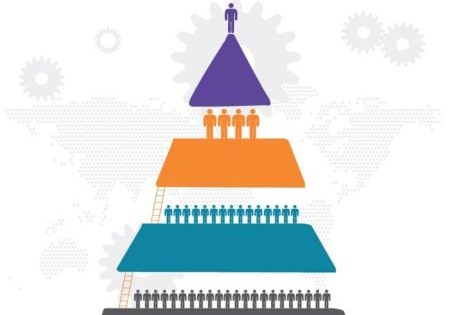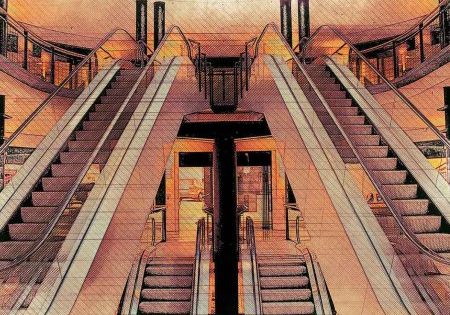The impact on the industry and the steps needed to prepare yourself and your clients
by Matt Davies
You may have already heard about the digital switch, also known as the “PSTN (Public Switched Telephone Network) switch off.” If you haven’t, it’s important to understand that the digital switch is happening, and it will affect key safety devices in buildings, in particular the lift emergency telephones.
Digital Switch Terminology
Before diving straight in, it’s important to get an understanding of the terminology surrounding the digital switch, so here are a few terms to get to know:
- PSTN – Public Switched Telephone Network, also referred to as landlines, Plain Old Telephone Service (POTS) or fixed-line telephones. It is a circuit-switched telephone network which uses copper wires to transfer analogue signals to households and businesses. This system has been used since the late 19th century.
- ISDN – Integrated Services Digital Network is the technology that came after PSTN. It uses digital transmissions to make calls over the circuits of PSTN lines, splitting the traditional copper wires into multiple digital channels. By doing this, the channels operate on a single copper line, allowing multiple phones to make and receive calls simultaneously.
- VoIP – Voice over Internet Protocol is replacing PSTN and ISDN services. VoIP allows users to place phone calls over an internet connection.
What Is the Digital Switch?
The digital switch refers to the transition to fibre optic lines from analogue (copper) lines in the U.K. According to Openreach, the U.K. telecoms infrastructure provider leading this digital transformation, every phone line in the U.K. will have switched to digital by 2025.
Ultimately, the transition to fibre lines means routing calls via VoIP and the end of analogue (PSTN and ISDN) telephone services in the U.K.
While this is fantastic news for internet speed, the digital switch will have a huge impact on any devices designed to use analogue signalling over copper lines.
Why Is This Happening?
Analogue telephone services were installed in the U.K. more than a century ago, and it’s time to wave them goodbye and introduce a faster, more advanced solution.
As a society our ever-increasing demand for data means that the copper network is no longer fit for this purpose. The move to the latest fibre technology will allow more people than ever to access fast internet speeds. It is estimated that full fibre will deliver a £59bn boost to U.K. productivity by 2025.
The PSTN network cannot live up to the expectation and demand of modern communications technology, and therefore, the network must be switched to fibre.
According to Openreach, the U.K. telecoms infrastructure provider who is leading this digital transformation, every phone line in the U.K. will have switched to digital by 2025.
Who Will the Digital Switch Affect?
In short, everyone in the U.K. From regular households to major organisations and small local businesses, the digital switch will affect anyone who uses technology that relies on copper-based lines.
When and Where Is the Digital Switch Happening?
The rollout of fibre optic lines has already begun across the U.K. Therefore, it’s essential for building owners and managers to prepare for the final switch now. By 2025, every phone line in the U.K. will be digital.
What’s the Impact on the Lift Industry?
The digital switch will affect any piece of technology that relies on copper-based analogue lines, including:
- Emergency telephones in lifts
- Telecare alarms
- Door-entry systems
- Security alarms
- Telemetry devices used by utilities companies
- Fax machines
Based on our experience in the sector, we’ve estimated that approximately 257,000 lifts in the U.K. have an emergency telephone which is connected to the PSTN. The vast majority of these are analogue devices that rely on the copper network to function correctly.
The move from copper to fibre comes with two major drawbacks for the lift industry:
- Removal of “line power” from telephone lines
- Reduction in support for analogue signalling
Power Failures
Copper telephone lines carry 48V of power, often called line voltage. As fibre optic cables are glass, they are unable to carry power. Therefore, the move to fibre also signals the end of line voltage.
This will pose problems for any installed devices which rely on the line voltage as their main source of power (line powered phones). Any line-powered devices will require an additional power source.
Line voltage also meant that in the event of a mains power failure, copper phone lines were unaffected. Fibre lines, by contrast, will fail as the mains power fails. This is because the hardware required to support a fibre line is powered from the mains supply.
Depending on the age of the lift, this presents a major risk, as a main power failure could also trigger a lift trapping. Whilst the U.K. telecoms regulator OfCom is requiring that “vulnerable customers” be provided a battery backup, it is unclear what provision is being made for industry. In addition, how these battery backups would be maintained has been called into question.
Analogue Signalling
As required by EN 81-28, lift emergency telephones must place a test call at least every three days. To transfer the test information, Dual Tone Multi Frequency (DTMF) signalling tones are used. This is a technology that dates back to the 1960s and is often called “touch tone.”
With the move to fibre, support for these older legacy technologies is being reduced and, over time, will be withdrawn.
One option is to install an analogue telephone adapter (ATA) to “translate” the analogue signals from the emergency telephone into data for the fibre line and vice versa.
Lift emergency telephones usually require all 16 tones (0-9, *, #, A, B, C, D) to place three-day test calls and alarm calls. ATAs aren’t always able to support the A, B, C, D tones (sometimes called “timing tones”), so care should be taken when sourcing one.
What Should I Do?
The immediate action you should take is to understand what equipment is installed on your lifts and what it uses as a communication link (e.g., PSTN, GSM, VoIP, etc.).
Any emergency telephones connected to GSMs (Global System for Mobile communication) will be unaffected by the digital switch. However, most emergency telephones will still be connected to fixed lines, and it’s these which will require intervention to continue functioning correctly.
It is critical to check the equipment with the original equipment manufacturer to ensure the telephone is compatible with fibre lines. Remember, even if it is, consideration still needs to be given to how the fibre line will be backed up in the event of a power failure.
Given the additional hardware required to reduce the risk of fibre lines failing during a power cut and potential issues with Dual-Tone Multi-Frequency Signalling (DTMF), we do not believe fibre lines are suitable for lift emergency communications. At Avire, we advise that customers move emergency telephones from PSTN connections to a GSM-based connection.
This has three main advantages:
- Monitored battery back up
- Allows for DTMF to data conversion to avoid signalling issues on older devices
- Roaming SIM cards and device level features have significantly mitigated the risk regarding signal strength
At the same time, clients may want to consider upgrading the existing analogue emergency telephones to fully digital systems.
Get more of Elevator World. Sign up for our free e-newsletter.










